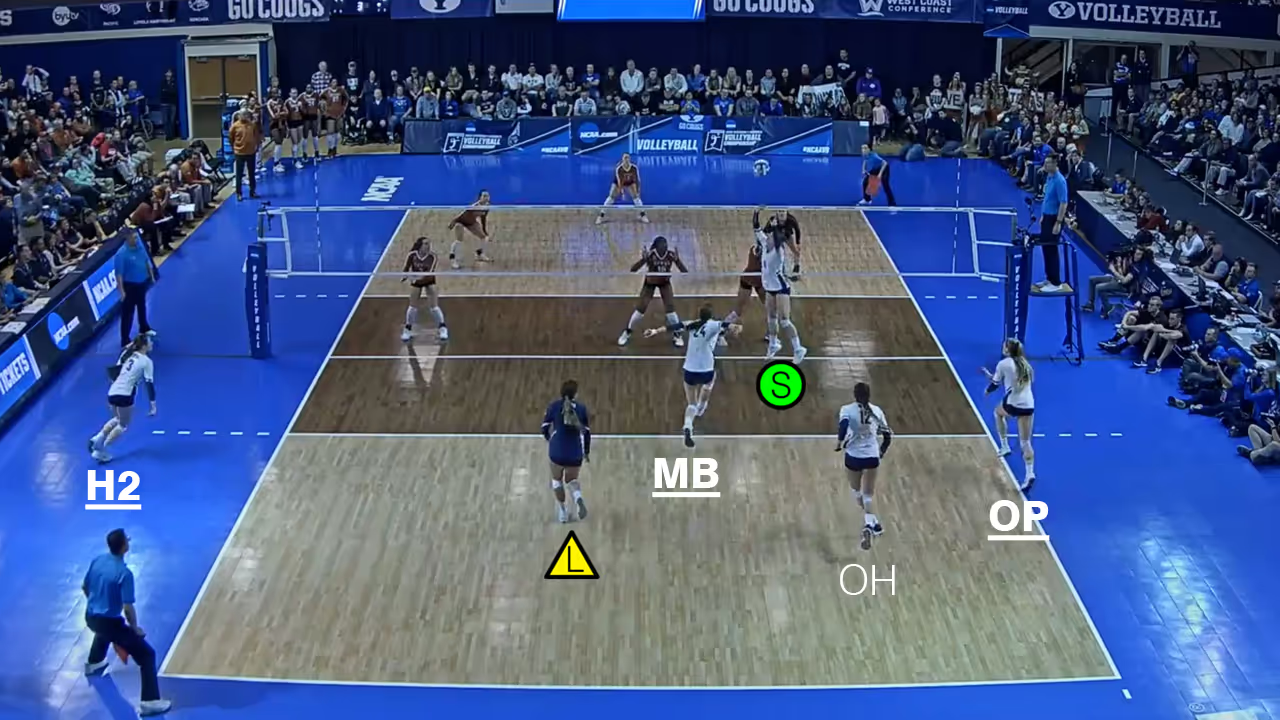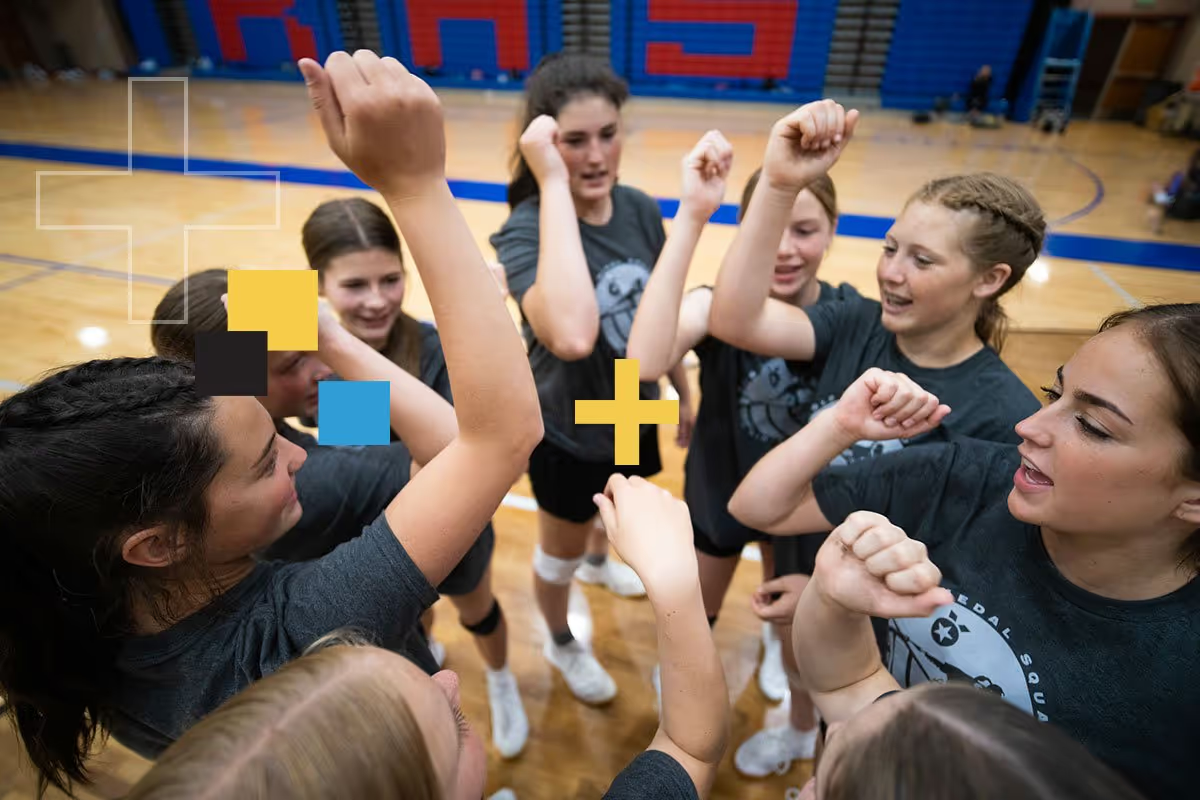Another post from Dr. Steve Bain, who not only knows a lot about neuro-science, but is becoming quite a good volleyball coach as well. He recently did us the honor of coming to Utah and spending a few days watching practice, talking volleyball, and generally giving us valuable feedback about our coaching as he saw it. We are currently keeping a cauldron and mix our players in practice every day, and needless to say found the content of this article really encouraging.
The Benefits of Team Mixing: Why None of Us Are as Smart as All of Us
Dr. Steve Bain
All that have attended a Gold Medal Squared Coaching Clinic have heard the virtues of the “competitive cauldron” and those who have made it a part of their programs have reaped the rewards. Like everyone, we instituted the cauldron at King’s to create practice intensity, high quality training sessions, student-athlete accountability, and to determine who was going to start and who wasn’t. We were not disappointed by the result as our commitment to the cauldron raised the overall skill level in our program and I believed it was our commitment to the cauldron process that took our program to the championship level.
While the cauldron environment has certainly enriched our program, one of my ongoing concerns was that game day performance was being negatively impacted because the starting players rarely competed with one another in practice. This was brought to the forefront when one of our players from the “pre-cauldron era” returned to serve as an assistant coach. After being in the gym for several days she turned to me and asked something to the effect, “Baino, who are the starters? You are always mixing them up and I can’t tell who’s on the first team and who isn’t!”
The comment from our former player triggered reflection on a several levels. Most notably, even though the cauldron’s benefits to the growth of our program were evident, I still wondered if team mixing was having a negative impact on game day performance? That is, could we improve match performance by spending less time on mixing and more time allowing our first team to compete together in practice? In my search to answer these questions I stumbled across an article titled, “Changes in Team Cognition After a Retention Interval: The Benefits of Mixing It Up”, by Jamie Gorman and Nancy Cooke of Arizona State University1. In their paper, Gorman and Cooke examined the effects of team mixing on “team cognition”. Team cognition is a relatively new area of psychology that is focused on how cognitive activity is distributed across two or more interdependent individuals, each with specific roles or functions, as they work together to achieve a common goal in a dynamic environment. Sounds like a volleyball team to me.
As the title of the paper indicates, Gorman and Cooke compared the retention intervals (3 to 6 week vs. 10 to 13 weeks) of team cognition between teams whose members were mixed (Mixed) vs. teams that had no change in membership (Intact). They measured shared knowledge, team process, and team performance using a three-person Unmanned Aerial Vehicle (UAV) simulator. They were also interested in testing two hypotheses about team cognition; namely “shared cognition” vs. “interactive team cognition”.
Measurements, models, and hypotheses aside, the most fascinating (and reassuring), result for me was that team mixing resulted in significant knowledge and process gains. What this means in the context of the cauldron is that Mixed team communication is longer in duration (it lasted throughout the experiment), and Mixed teams communicate more frequently than Intact teams.
The authors go on to discuss how their results support the interactive team cognition hypothesis over the shared cognition model. In their view, relying on Intact teams (shared cognition) produces a habituated response related to team effectiveness that is rigidly patterned and may not reflect changing circumstances of novel task performance. In contrast Mixed teams have flexible interaction dynamics that are responsive to evolving, unpredictable situations (think volleyball here).
And here’s the kicker, “process-oriented team training schedules, developed to introduce interaction variability to train flexible team interaction”, (sounds like a cauldron to me), “result in teams that perform at a higher level under novel task conditions compared to Intact teams that are cross-trained for shared knowledge2. From an interactive approach, the acquisition and retention of flexible interaction processes is the function of team learning (i.e. practice), and it is the quality of those processes, independent of the level of shared knowledge, that serves as the foundation for team effectiveness.
I will also share the following paragraph from the discussion section of the paper:
“How then are we to interpret the team mixing results? Motor learning theorists have long suggested that increased variability of practice conditions can enhance the transfer of a specific class of movements (a schema) to novel situations3, 4. Furthermore, consistent across both motor and verbal learning, practice condition variability induces initial difficulties for the learner during task acquisition, but enhanced retention of generalized skill that transfers to the post-training environment5, 6. A key concept, then, for understanding the present results is that mixing team members may induce practice condition variability by introducing the need for more interaction, which allows teams to experience more fully the space of possible team-member relations that could occur7. It is clear that mixed teams interacted more in terms of communication duration. Initially, those demands for explicit communication may introduce new coordination costs that manifest in decreased team effectiveness. Ultimately, however, this enhanced interaction experience may lead to improvements in team process as initially “noisy” interactions are integrated into teams’ behavioral repertoires8. During this interaction-based learning process, schema-like relations, such as shared taskwork knowledge, may become modified as high levels of team effectiveness are recovered.”
In summary, the observations in this study, along with current research in the area of team cognition, is revealing a benefit of the competitive cauldron that has not previously been articulated. Namely, that not only does team mixing raise the performance of individual team members, it also significantly enhances team performance. Based on this knowledge our commitment to the competitive cauldron is now stronger than ever and we will continue to use this process to ensure that the teams we train are greater than the sum of its parts.
1. Gorman and Cooke, 2011. Journal of Experimental Psychology: Applied. Vol. 17, No. 4, 303–319.
2. Gorman, Cooke, and Amazeen, 2010. Human Factors. Vol. 52:295-307.
3. Catalano and Kleiner, 1984. Perceptual and Motor Skills. Vol. 58:851-856.
4. Schmidt, 1975. Psychological Review. Vol. 82:225-280.
5. Bjork, 1994. In: Metacognition: Knowing about knowing; pp. 185-205.
6. Schmidt & Bjork, 1992. Psychological Science. Vol. 3:207-217.
7. Frank, Michelbrink, Beckmann, & Schollhorn, 2008. Biological Cybernetics. Vol. 98:19-31
8. Schollhorn, Beckmann, Michelbrink et al., 2006. Int Journal of Sport Psychology. Vol. 37:186-206.







